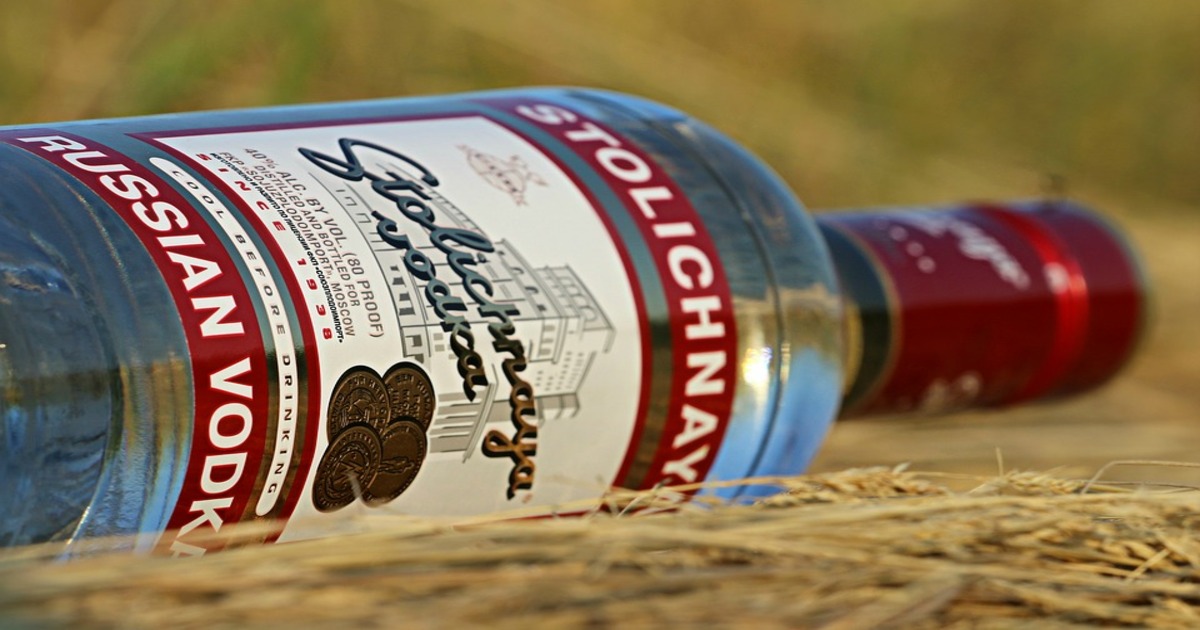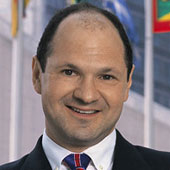Vodka: Market Riches After Communism
What role did vodka play in restructuring Russia’s economy after communism?
August 3, 2014

This is part three of a three-part Globalist series on vodka’s impact on Russia.
Early on, the Yeltsin government, which lasted from July 10, 1991 to December 31, 1999 — and during which pretty much everything was for sale — created a loophole for vodka importers.
▪ Pt. 1: Russia Through the Vodka Glass
▪ Pt. 2: Sobering Up the USSR
▪ Pt. 3: Market Riches After Communism
While Russia imposed heavy tariffs on the import of such things as medicines and staples, it granted some "charitable" institutions — such as societies of the handicapped and sports clubs — the ability to import vodka without tariffs.
You can only imagine how many tattooed veterans of the Soviet penal system suddenly became athletes or invalids. Boris Berezovsky, by the way, became one of quite a few Russian oligarchs who made their original fortune taking advantage of those tariff-free vodka imports.
Vodka was a crucial factor in starting his business career because it gave him the cash flow to become a player during the privatization boom.
During the Yeltsin era, all restrictions and regulations on private commerce — including the sale of alcoholic beverages — were suspended.
You could now find plenty of vodka. It was sold around the clock at affordable prices everywhere — from specialized liquor stores to subway stands.
Russia’s Finlandization
Russia’s situation was thus similar to what happened in Finland when very strict alcohol regulations in that country were removed in the mid-1990s after it became a member of the European Union.
Those who were determined to drink themselves to death promptly did so. The rest learned to drink more moderately.
Along with Western imports, new Russian producers began to appear on the Russian vodka markets. One of the early ones was a former KGB operative named Pyotr Smirnov.
The Smirnov family used to be the purveyors of high-quality vodka to the court of his Imperial Majesty, the Autocrat of All-Russia, Czar Nicholas II.
After the revolution, they brought their trademark to the West. Known as Smirnoff, it is currently owned by a major international drinks conglomerate, Diageo.
Trademark wars
The Smirnoff vodka, of course, is a registered trademark all over the world. But in Russia, the quick-witted Mr. Smirnov — who may or may not be related to the illustrious distilling family — registered his own trademark in Russia only a few days before Smirnoff did.
No matter how much the Western company fought him in court, he continued to distill and sell his own vodka brand in Russia.
It became the most popular in the country for a while, far outselling the brand spelled with a double-F. But Smirnov's drink could never be sold anywhere outside the Russian borders.
The vodka industry in emerging Russia was also directly connected to momentous events on the global financial stage.
In particular, the Russian financial crisis and the devaluation of the ruble on August 19, 1998 proved a blessing in disguise for Russia's vodka producers.
It marked a new era in the history of Russia — as well as the history of the Russian vodka industry.
What happened? Well, the ruble went from around six rubles per dollar to around 12 rubles — and is now worth around 27 rubles. Russia defaulted on its debt — and became a four-letter word for foreign investors.
But Russia's domestic producers prospered. Imported goods — including imported vodka — shot up in price so much that virtually overnight they became unaffordable for domestic consumers in the Russian market.
As a result, Russian-made goods — and especially vodka — could now compete very well against their Western rivals.
After some dramatic reorganizations of existing distilleries, and the emergence of quite a few new ones, Russian vodka producers got down to real business. They toughed it out in the real marketplace of pricing and marketing — not rigged distribution regimes.
Embarrassment of riches
In just a few years, the number of different vodkas on Russian store shelves skyrocketed — proving even to the most convinced proletarian who never even heard of Adam Smith that the market economy does work.
Now, literally dozens of vodkas — ranging in name from Kazak Special to Christ's Tear — compete for drinkers' attention.
There is a mind-boggling variety of bottle shapes. Some vodkas come in bottles shaped like naked women or mythic heroes.
And they are sold in hip flasks — as well as in half-gallon jugs for family consumption. There are even 12-ounce aluminum cans and packaged plastic glasses nicknamed "Russian yogurt."
Never mind the gimmicks. Real connoisseurs in Russia always know which brand is good — and which cannot be consumed without serious risk to life and limb.
Connoisseurs and frauds
If you're in doubt, you can always ask the serious-looking men making their purchase at the same counter.
You'll get a lecture on the advantages of one brand over the other — from the point of view of its effect on the mind as well as the effects the morning after.
The only problem is that the new Russian has become far too enterprising. If there is a brand that becomes too popular for its own good, there is always a risk of buying a fake or pirated knockoff.
As always in the Wild East, the motto in the trade is Caveat Emptor — buyer beware.
So if you want to be really careful, you can still buy Absolut, Finlandia or Smirnoff — the familiar vodkas imported to Russia from the West.
However, even the best Russian varieties cost only the equivalent of two dollars. And the Western varieties? You pay five to ten times more.
If I were a Western vodka producer, I'd start to tremble thinking about what will happen when Russian distillers finally move to claim the world market for themselves.
Takeaways
Read previous

Vodka: Sobering Up the USSR
August 2, 2014
